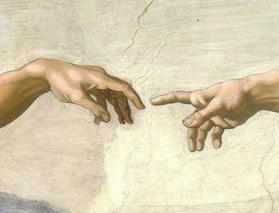Christian apologetics tends to focus on ethical or rational arguments. Questions such as “Can we be good without God?” and “Does that being exist than which nothing greater can be conceived?” and “What are the transcendental conditions of knowledge?” have dominated the field. A good historical argument can be made, however, that a complete Christian apologetic must assemble all three of the “transcendentals,” not only the true and good, but the beautiful. Judgments concerning beauty are proverbially subjective, and perhaps this is one reason why Christians have not been attracted to an aesthetic apologetic. But the appeal would not be to point to this or that beautiful thing; rather, it would point from the existence of beautiful things to the intuition that there is a Beauty beyond beauty.
In large measure, such questions dragged Augustine from a kind of materialism through Platonism and finally to Christianity, and Confessions may be seen as organized around this theme. Augustine’s earliest attempt to grasp the nature of God appears in his treatise on the “Beautiful and the Fitting,” in which he distinguished between what is beautiful in itself and what is beautiful because of its apt connection with something else. Ultimately, this formulation is a failure because Augustine was still conceiving of absolute beauty as corporeal and therefore mortal, subject to change. Plotinus and Porphyry enabled Augustine to conceive of incorporeal being, and thus supported his ascent toward unchanging Beauty itself. Yet, Augustine found neoplatonism finally unsatisfying; as he put it, it gave him a whiff of Beauty but what it offered was too transient to give him “the capacity to eat” (Confessions, 7.17.23).
Only after his conversion to Christ did Augustine finally dine at the table of beauty. Shortly before the death of his mother, Monica, Augustine sat with her overlooking a garden in Ostia, and imagined with her the wonders of the beatific vision, the everlasting vision that “alone would ravish and absorb and enfold in inward joys the person granted the vision” (Confessions 9.10.25). Theological and philosophical comprehension is here caught up into an aesthetic ecstasy. As he reflected back on the process of his conversion, Augustine continued to see it as an aesthetic and even sensual ascent. Prior to conversion, “the lovely things kept me far from you,” but finally he was enabled to hear the call, to catch a glimpse of the God who is “radiant and resplendent,” to smell His fragrance, to taste Him, to feel His touch. Moving up from the beauty of things, he came to Beauty itself, the Beauty that is God.
An objection may arise here: Aesthetic appeals such as Augustine’s make for wonderful poetry, but can they be employed in “practical” apologetics? Will it make any impact on that elusive creature, the “man in the street”? One response would be to point out that this cramped conception of what is “practical” is already a concession to a questionable functionalism. Refusing to question the man in the street about beauty simply confirms his preference for useful but ugly streets. But if, as Augustine seemed to believe, man is created so as to respond to the beauty of God and His creation, then an apologetic that highlights the beauty that beckons us is perfectly practical. Another response would be to suggest that aesthetics is ultimately inseparable from rationality and ethics. Scientists frequently comment on the ecstasy of breaking through to a theory that configures the data into a new whole, and a it is improbable that one can live a good life without a certain grace.
In his book, Hallmarks of Design , Stuart Burgess, a lecturer in Engineering Design at Bristol University, provides a brilliant example of the inseparability of rational and aesthetic appeals. As the title suggests, the book contests the theory of evolution using the traditional argument from design. Burgess examines in detail irreducible mechanisms such as the human knee, the mechanisms needed to allow birds to fly, and Earth’s irreducible “ecosystem.” But just as a Corinthian capital is not needed for a column to bear weight, so there are many features of the natural world whose design cannot be accounted for in purely functional terms. For example, Burgess discusses bird songs at length, pointing out the variation of birds songs from brief and repetitive buzzes and trills to fairly lengthy compositions and the ability of some birds to reproduce songs of other birds. “Robins,” he adds, “have been observed to have as many as 57 different songs in their repertoire,” and he notes that many birds have absolute pitch and are capable of transposing from one key to another.
Bird songs evolved, according to most evolutionary theorists, as an aid to sexual selection, but as Burgess points out this explanation simply does not hold up. It is highly unlikely that the complicated anatomical prerequisites for singing have evolved by chance variations. Moreover, linking bird songs to sexual selection “assumes that birds are able to appreciate and select music.” And besides, many species survive “quite happily without sophisticated songs whilst others produce songs of immense beauty.” When we hear an “extraneous” musical digression, we may conclude that the composer is being playful. Burgess’s evidence suggests that the “non-functional” beauty of bird songs hints not only at the existence of a Composer, but at His whimsy.
Apologetics should indeed aim at conviction, for a Christian has always been and will always be a man or woman who, with the church throughout the ages, says “Credo” with sincerity. At the same time, apologetics can do no less than to solicit the Augustinian response as well: “Late have I loved you, beauty so old and so new: late have I loved you” (Confessions 10.27.38).














